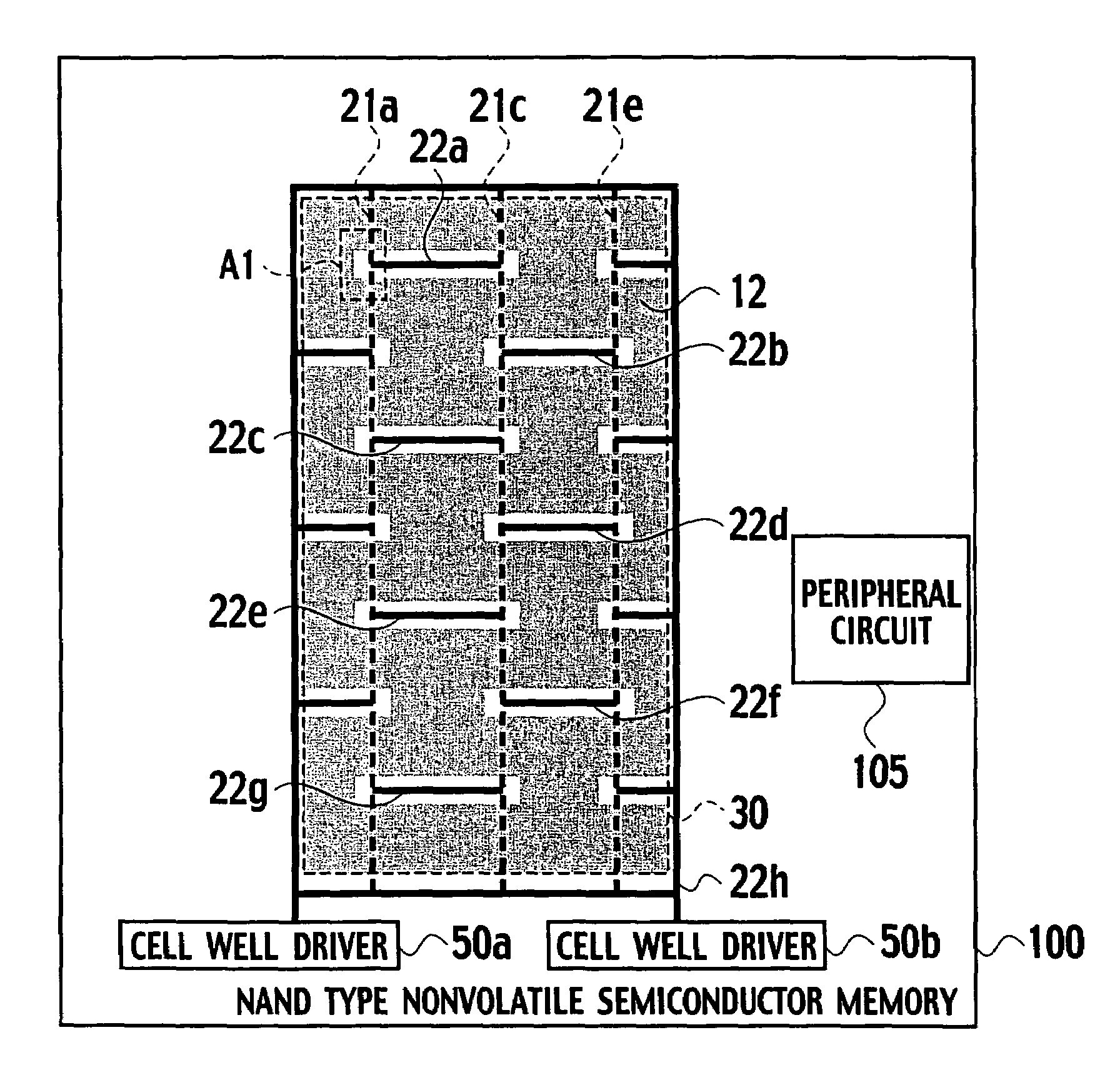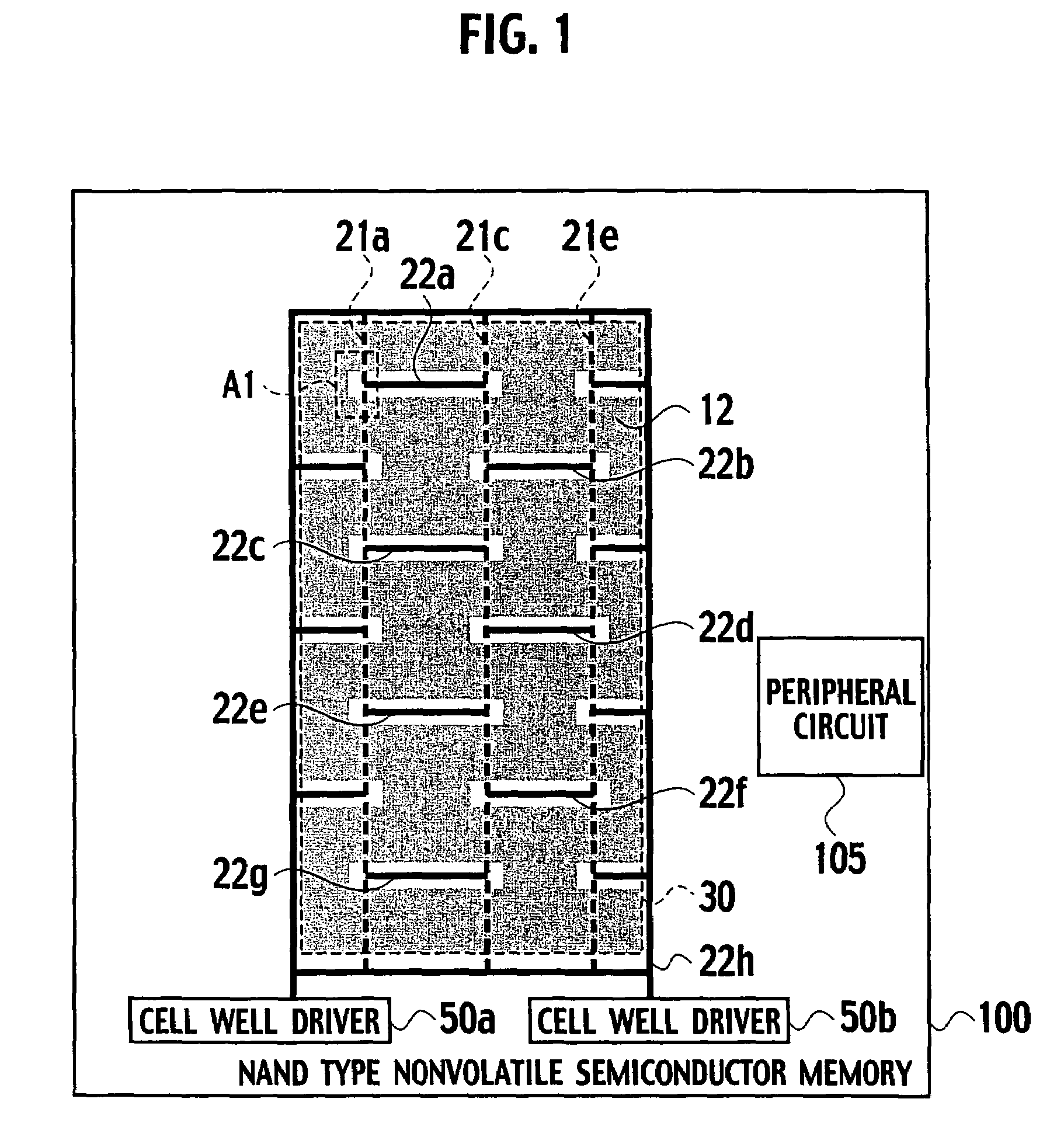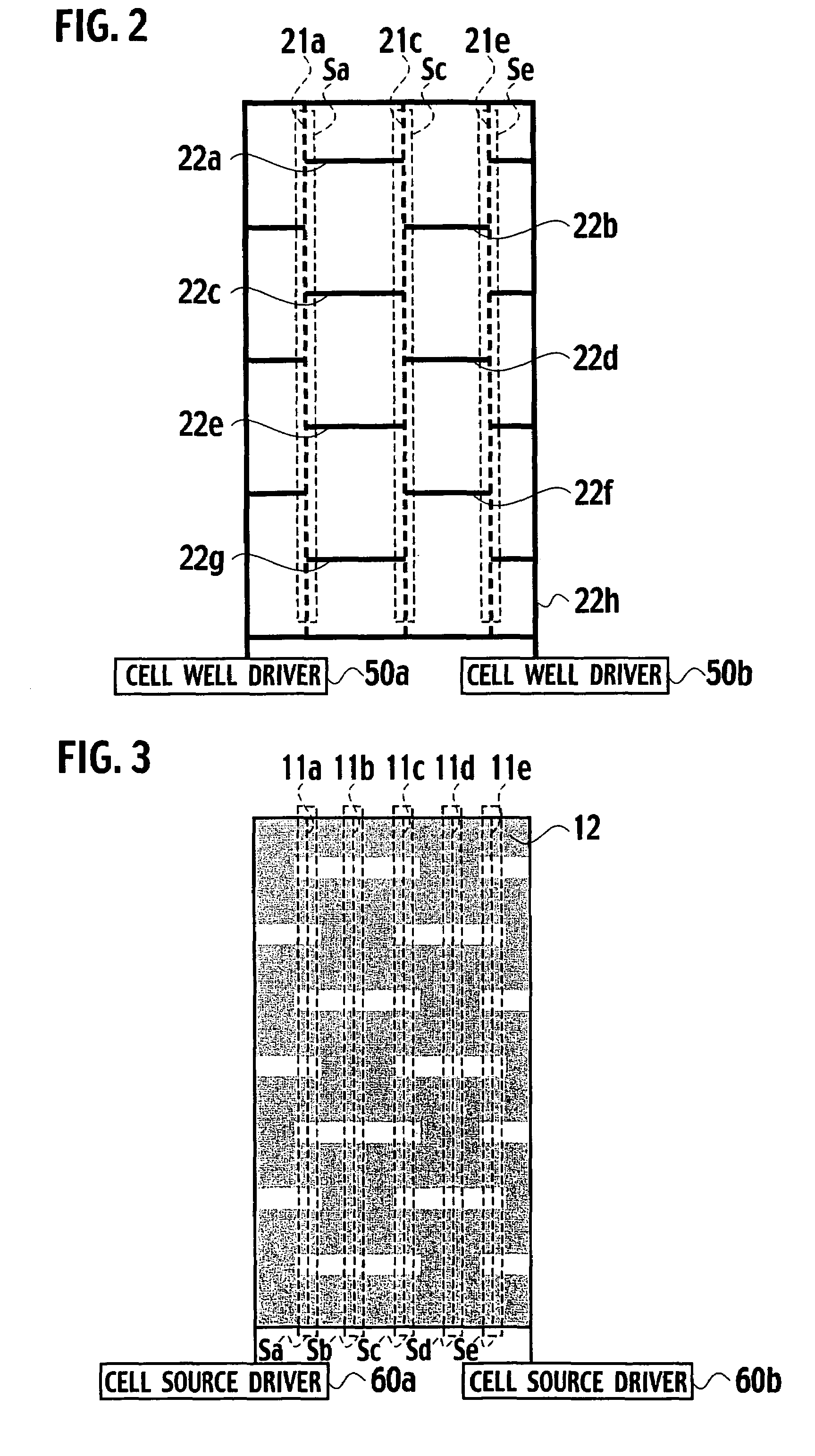Nonvolatile semiconductor memory having a plurality of interconnect layers
a nonvolatile semiconductor and interconnect layer technology, applied in semiconductor devices, digital storage, instruments, etc., can solve the problems of reducing the performance of nand-type nonvolatile semiconductor memory, small and inability to detect change in bit line potential
- Summary
- Abstract
- Description
- Claims
- Application Information
AI Technical Summary
Benefits of technology
Problems solved by technology
Method used
Image
Examples
first embodiment
[0048]As shown in FIG. 1, a NAND-type nonvolatile semiconductor memory 100, according to the first embodiment of the present invention, includes a memory cell array 30, a plurality of first cell well lines 21a, 21c, and 21e, a plurality of second cell well lines 22a through 22h and a second cell source line 12. The memory cell columns, each including a plurality of vertically aligned memory cell transistors and select transistors that select the memory cell transistors, are horizontally aligned in the memory cell array 30. The first cell well lines 21a, 21c, and 21e are connected to well regions in which the memory cell columns are formed. The second cell well lines 22a through 22h are arranged in an interconnect layer above the first cell well lines 21a, 21c, and 21e. The second cell well lines 22a through 22h are connected to the first cell well lines 21a, 21c, and 21e so that the first cell well lines 21a, 21c, and 21e electrically connect to one another. The second cell source l...
second embodiment
[0080]As shown in FIG. 19, a NAND-type nonvolatile semiconductor memory, according to the second embodiment of the present invention, includes a memory cell array 30 in which horizontally aligned memory cell columns are arranged, each including vertically aligned memory cell transistors and select transistors configured to select the memory cell transistors, a plurality of first cell well lines 21a, 21c, and 21e are connected to well regions, respectively, in which a plurality of memory cell columns are formed, a plurality of first cell source lines, which are connected to the source terminals of the respective select transistors in the plurality of memory cell columns, a second cell well line 23, which is arranged in an interconnect layer above the first cell well lines 21a, 21c, and 21e and electrically is connected to the first cell well lines 21a, 21c, and 21e to one another, and a second cell source line 13, which is arranged in an interconnect layer in which the second cell we...
third embodiment
[0091]As shown in FIG. 27, a NAND-type nonvolatile semiconductor memory according to the third embodiment of the present invention includes vias 121i through 121l on a shunt region Sa on which vias 221i through 221m connect a second cell well line 23 arranged in the second interconnect layer and first cell well lines 21i through 21m arranged in the first interconnect layer. The vias 121i through 121l connect a second cell source line 13 arranged in a second interconnect layer and first cell source lines 11i through 11l arranged in a first interconnect layer.
[0092]As shown in FIG. 27, the vias 221i through 221m and 121i through 121l are linearly arranged along the memory cell column length. FIG. 27 shows only the vias 221i through 221m and 121i through 121l arranged above the shunt region Sa; however, vias which connect the second cell source line 13 and cell source lines arranged in the first interconnect layer are arranged above the shunt regions Sc and Se, as well as the shunt reg...
PUM
 Login to View More
Login to View More Abstract
Description
Claims
Application Information
 Login to View More
Login to View More - R&D
- Intellectual Property
- Life Sciences
- Materials
- Tech Scout
- Unparalleled Data Quality
- Higher Quality Content
- 60% Fewer Hallucinations
Browse by: Latest US Patents, China's latest patents, Technical Efficacy Thesaurus, Application Domain, Technology Topic, Popular Technical Reports.
© 2025 PatSnap. All rights reserved.Legal|Privacy policy|Modern Slavery Act Transparency Statement|Sitemap|About US| Contact US: help@patsnap.com



